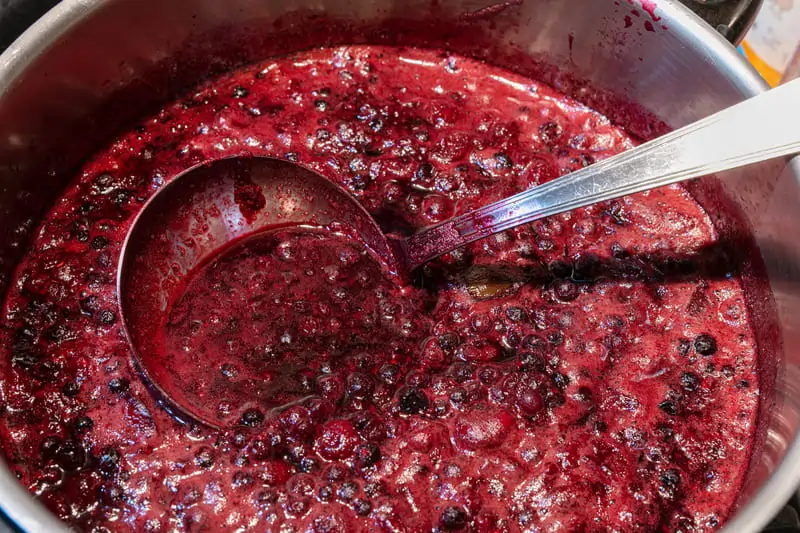When it comes to making a perfect cherry pie, achieving the right consistency is key. A runny filling can ruin the structure of your pie, while an overly thick filling can overwhelm the delicate balance of cherries’ natural sweetness. Choosing the best thickener is essential for creating a pie that’s both delicious and visually appealing. In this article, we’ll explore the science behind pie thickeners and help you select the perfect option for your next cherry pie.
Understanding the Science of Thickening Agents
Thickening agents work by absorbing the liquid released during baking and forming a gel-like structure that holds the filling together. Different thickeners react uniquely to heat, moisture, and acidity, making some better suited for cherry pie than others. For a deeper dive into the science of pie thickeners, you can check out this pie thickener guide, which explains how each thickener functions.
If you’re looking for more baking tips, check out this guide on how to make the perfect apple cherry pie to experiment with another fruit-forward dessert.
Tips for Mixing and Cooking Thickeners
Achieving the perfect consistency for pie fillings requires a proper understanding of how to use thickeners effectively. These tips will help you avoid common mistakes, ensuring your filling is glossy, smooth, and holds its shape. For additional insights into choosing the right thickener, check out our guide to popular pie thickening options.
1. Mix Your Thickener with Dry Ingredients First
To prevent clumping, always combine your thickener with dry ingredients like sugar or spices before incorporating it into the fruit mixture.
- Why This Works:
- Combining the thickener with sugar ensures even distribution, preventing lumps from forming when the mixture meets moisture.
- This step also allows the thickener to blend seamlessly with other ingredients, ensuring a consistent texture throughout the filling.
- How to Do It:
- In a small bowl, whisk your chosen thickener (such as cornstarch, flour, or tapioca) with sugar, cinnamon, and any other spices called for in your recipe.
- Gradually sprinkle this mixture over the fruit, tossing gently to coat each piece evenly.
Incorporating this technique into your baking routine will save time and create professional-quality results. Learn more about blending ingredients effectively in our baking preparation tips.
2. Cook the Filling Long Enough for the Thickener to Activate
Heat is essential for most thickeners to fully activate and bind the filling. Proper cooking ensures your pie filling is neither too runny nor overly thick.
- Why This Is Important:
- Thickeners like cornstarch and tapioca rely on heat to reach their full thickening potential, which typically occurs around 200°F (93°C).
- Cooking the filling sufficiently helps the starch molecules swell, creating a smooth and cohesive texture.
- Best Practices:
- Stir the filling gently over medium heat until the juices start to bubble and thicken. For pies that are baked raw, ensure the filling is hot and bubbling in the oven for at least 10–15 minutes.
- Avoid removing the pie from the oven too early, as undercooked thickener can leave the filling watery and unstable.
Discover additional tips for perfecting your pie filling in our step-by-step baking guide, which covers temperature control and timing.
3. Avoid Over-Stirring the Filling
Over-stirring your filling, especially once the thickener has started to activate, can break down the starch structure and result in a runny or uneven consistency.
- Why This Happens:
- When starch molecules are subjected to excessive agitation, they can rupture, losing their ability to thicken the filling effectively.
- This is particularly true for delicate thickeners like cornstarch or tapioca, which require minimal handling after activation.
- How to Prevent It:
- Stir the filling gently and only as needed to distribute the thickener evenly.
- Once the filling starts to thicken, reduce stirring to avoid breaking the starch bonds.
- Use a heatproof silicone spatula or wooden spoon to handle the filling carefully without overworking it.
Explore more on maintaining the texture of your baked goods in our guide to common pie mistakes and how to fix them.
Ensuring Perfect Results Every Time
By following these essential tips for mixing and cooking thickeners, you’ll achieve a beautifully consistent pie filling that’s glossy, smooth, and delicious. Mixing your thickener with dry ingredients, cooking the filling long enough, and avoiding over-stirring are critical steps in mastering this process. For more in-depth advice and recipes, check out our curated list of pie-making tips and tricks and take your baking skills to the next level.
Choosing the Right Thickener for Your Cherries

The type of cherries you use in your pie significantly affects the choice of thickener. Each type—fresh, frozen, or canned—has unique characteristics that require specific thickening agents to ensure the filling achieves the perfect consistency. For inspiration on incorporating fresh fruits into your desserts, explore our guide on how to use fresh and tropical fruits in baking.
Fresh Cherries
Fresh cherries are a popular choice for their vibrant flavor and firm texture. However, they release a considerable amount of liquid during baking, requiring a thickener that can absorb the juices without overpowering the fruit’s natural taste.
- Recommended Thickeners:
- Cornstarch:
- Provides a clear, glossy finish that highlights the cherries’ natural color.
- Works quickly when exposed to heat, ensuring a smooth consistency without long cooking times.
- Tapioca:
- Absorbs liquid effectively and creates a bright, translucent filling.
- Ideal for pies that need to hold their shape or for fillings prepared in advance.
- Cornstarch:
- How to Use:
- For cornstarch, mix 1 tablespoon per cup of cherries with sugar and spices to prevent clumping.
- For tapioca, use 1½ teaspoons per cup of cherries, grinding the granules for a smoother texture.
Fresh cherries pair wonderfully with other seasonal fruits. To explore creative pairings, check out our tips on blending fruit flavors in desserts.
Frozen Cherries
Frozen cherries are a convenient option when fresh cherries aren’t in season. However, they release even more liquid as they thaw, making them a bit trickier to work with.
- Recommended Thickeners:
- Tapioca:
- Excels at absorbing the extra liquid from thawed cherries, ensuring a stable filling.
- Maintains its structure during baking, preventing the pie from becoming watery.
- ClearJel:
- Designed for precision, ClearJel provides consistent results and creates a smooth, cohesive texture even with the additional moisture from frozen cherries.
- Tapioca:
- How to Use:
- Allow frozen cherries to thaw slightly and drain excess liquid before mixing with other ingredients.
- Combine tapioca or ClearJel with sugar to coat the cherries evenly.
Learn more about handling frozen fruits in our guide to baking with frozen ingredients to make the most of these convenient options.
Canned Cherries
Canned cherries, often preserved in syrup, are pre-cooked and contain added liquid, making them an excellent choice for quick and easy pie preparation. However, their syrupy consistency requires a specific thickener to balance the filling.
- Recommended Thickeners:
- ClearJel:
- Ideal for canned cherries, as it maintains a smooth texture and holds its structure even with the additional syrup.
- Produces a professional-quality filling with a glossy, cohesive appearance.
- Flour:
- A simple and accessible option for home bakers, although it creates a denser filling with a slightly cloudier finish.
- ClearJel:
- How to Use:
- Drain some of the syrup from canned cherries to reduce excess moisture, but retain a small amount for added flavor.
- Use 1 tablespoon of ClearJel per cup of cherries for optimal results, or substitute with 2 tablespoons of flour if needed.
Canned cherries are versatile and can be used in a variety of quick desserts. For additional recipes, see our guide to easy fruit-based bakes.
Creating the Perfect Cherry Pie
Choosing the right thickener based on the type of cherries ensures a filling that is smooth, stable, and perfectly balanced in texture. Fresh cherries shine with cornstarch or tapioca, frozen cherries benefit from the precision of ClearJel, and canned cherries thrive with thickeners that manage their syrupy nature. For more tips on selecting and preparing fruit for baking, explore our complete pie-making resources and create the ultimate cherry pie every time.
FAQs
What is the best thickener for fresh cherries in pie filling?
For fresh cherries, cornstarch and tapioca work best as they thicken quickly and provide a glossy finish. To explore more tips for creating fruit-based pies, check out how to make the perfect apple cherry pie.
How much cornstarch should I use for cherry pie filling?
Use approximately 1 tablespoon of cornstarch per cup of cherries for a balanced consistency. For detailed guidance on using cornstarch effectively in desserts, see this comprehensive pie thickener guide.
Can I use gluten-free thickeners for cherry pie?
Yes! Tapioca, arrowroot, and ClearJel are excellent gluten-free options. For more ideas on gluten-free or alternative baking ingredients, you may also enjoy reading about creative baking solutions.
Why is my pie filling cloudy after baking?
This is often due to overusing flour as a thickener. Consider switching to cornstarch or ClearJel for a clearer result. To avoid other common baking mistakes, explore this helpful guide on troubleshooting pie and dessert issues.
Final Thoughts
The best thickener for cherry pie filling depends on your specific needs and preferences. Whether you prioritize clarity, flavor, or ease of use, options like cornstarch, tapioca, and ClearJel offer reliable solutions. Experiment with different thickeners to find what works best for your baking style. With these tips, your next cherry pie will have the perfect consistency, every time!


